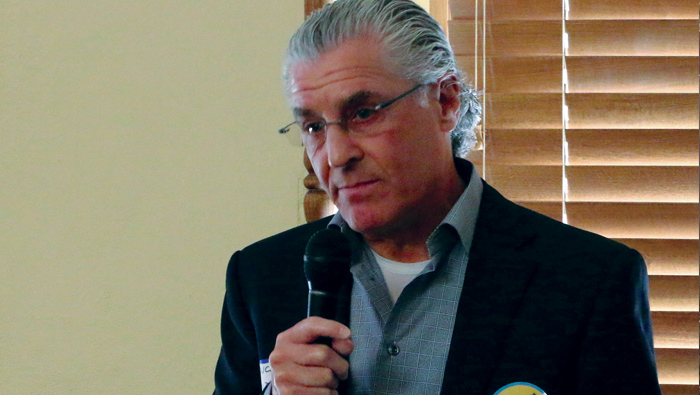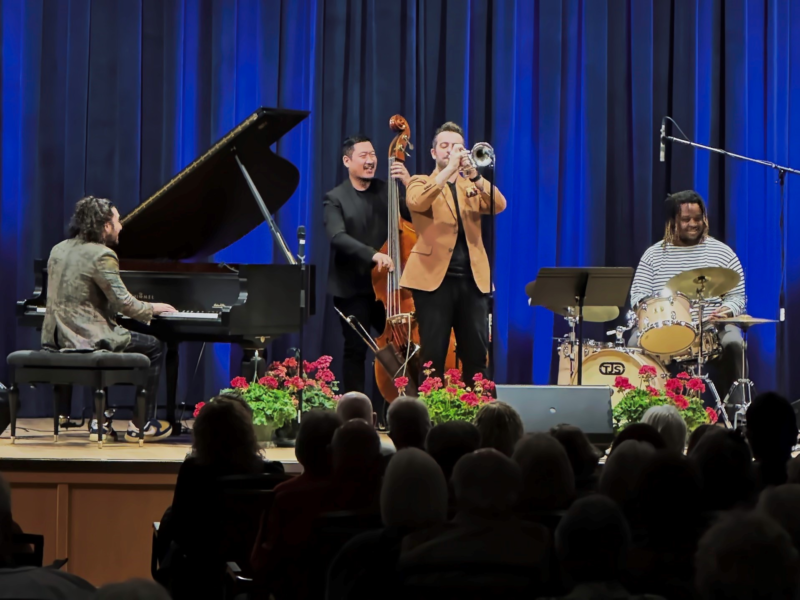Lance Goldberg does not shy away from discussing death. It’s actually a top priority for him. He is carrying on the advocacy work that his wife, Terry, started before she died in 2015.
“We all die. And our loved ones all die,” says Lance. “It’s not a question of can you keep them from dying, but what is that death like.” After suffering with Terry as her terminal condition deteriorated into an inevitable and, what he describes as horrible death, Lance is committed to raising awareness and doing what he can to help change the law in Arizona that prohibits physicians from helping terminally ill patients minimize pain and terror in favor of a more peaceful death.
In January 2013, Terry was diagnosed with Parkinson’s, although she had symptoms for several years before that. However, the rapid pace of her decline raised questions about the diagnosis. And in May 2014 she was diagnosed with multiple system atrophy (MSA), a rare progressive neurological disorder that affects both movement and involuntary actions, such as breathing, blood pressure, heart rate, bladder function and digestion.
“At that time we knew that her life expectancy was fairly short – one or two years, three or four years. It’s a very rare disease. They trace life expectancy from when the symptoms began, which was rather vague,” Lance says. “So we knew it was going to be fairly quick. We also saw, in the beginning, that the way that death usually came was in someone’s sleep, because the autonomic nervous system was very much affected, and that controls our breathing.”
They took solace that one night she would just go to sleep and her body wouldn’t remember to breathe, and that would be it. But as her symptoms worsened and there were times when she was unable to clear saliva, swallow or catch her breath, they realized that it wasn’t that simple. “There was an awful lot of terror that went into this before that night that you went to sleep and didn’t wake up. And then the more we read about it … it really isn’t just one night that you go to sleep and you don’t wake up. There are a lot of nights that are terror driven,” Lance says.
At that point, they began asking medical professionals about Terry’s options. Several of them indicated that there were things she could do that might enable her to avoid the worst of it, if she wanted to act on them. That led the Goldbergs to consult with organizations that offer information and knowledge of resource accessability. They were introduced to options that Terry might be able to exercise, while she was still capable.
“Terry was very much aware that the avenues that we found all involved the patient needing to self-administer. Even in Oregon, which has changed their law in the last year or two, at the time that we were looking at this, a physician could prescribe and provide medication, but it had to be administered by the patient, not the doctor or any medical professional,” says the 68-year-old Scottsdale resident.
They looked at the option of going to Switzerland, which requires that two independent physicians agree on both the diagnosis and prognosis before a physician is allowed to administer an intravenous medication to hasten death. However, Terry’s condition continued to worsen, making travel to Europe impossible. “Our family had the financial wherewithal to do that,” says Lance. “It’s another thing that drives Terry’s surviving family to fight for this, because while it was an option for us and it was comforting to Terry to know that it was a possibility, it’s not an option that’s available to very many people in this country. We ought to have similar laws here.”
Lance says that Terry acquired the medication to bring about a more peaceful end, which gave her a lot of comfort. “From what I understand from all that I’ve read, for those patients who get that prescription, it brings them an enormous amount of psychological and emotional relief. Only about 40% of patients who get that prescription ever utilize it,” he says.
Although Terry’s condition got progressively worse, she still wanted to spend time with her family and it was hard for her to give that up. Lance says that she passed the point where she could have taken the medication herself by a few months. “It had to be taken in a certain way with a certain sequence and a certain rapidity. And we practiced and found that it wasn’t going to be possible,” Lance says.
“We were still so ignorant in so many ways. We really didn’t know what that end was going to be like until that end was here. There were a lot of things along the way that Terry said, ‘Oh, if that ever happens to me, if I ever have to have someone do that for me, that’ll be it for me.’ She passed a lot of those milestones. She was a lot more courageous then I would be, I think. There was a lot of pain that she endured, there was a lot of loss of dignity that she endured,” he says.
Since Terry could no longer administer the medication herself, the two options that were available were palliative sedation (being put into a coma), and VSED (voluntary stopping of eating and drinking). Through counseling, the Goldbergs were informed about what each of these meant. They read, watched videos and learned of other people’s experiences. Lance says that one of the videos chronicled the path of a physician who chose VSED. It took 17 days. “There was some indication that he wasn’t aware of it after the first few days, because he seemed to be in a kind of euphoric state, we think. But that didn’t look like anything she wanted to go through.”
When Terry felt that she couldn’t go on any longer, she and Lance met with a home hospice nurse, who said that she was still getting some relief from morphine and therefore palliative sedation was not yet an option, according to the hospice protocol.
So Terry stopped eating and drinking. “She didn’t tell us; she just showed us by her actions,” says Lance. “Not that she was eating or drinking a lot by that point, but it was pretty obvious by the next day that she was refusing that. And we didn’t do anything other than make it available to her. We continued with the morphine and it was about five days. It was only the last day, and really the last three or four hours, where she didn’t appear to be quite in the moment. But it also didn’t appear to be very pleasant for her.”
The Goldberg family now advocates towards changing the law so that others in Terry’s position can choose how they want to die. Lance and his daughter Lauren Cain speak at meetings organized by Compassion & Choices Arizona and by state Senator Barbara Maguire, who introduced aid in dying legislation last session. His daughter, Leigh Suskin, is active with Compassion & Choices in Denver, where she lives. They are not only honoring Terry’s legacy, but pursuing a change that they truly believe in.
“She knew that we were going to continue that discussion after she died and she wanted us to, but we aren’t just doing this to honor her wishes,” he says. “We firmly believe in our right to have that option for all of us. … This ought to be an option that’s available to someone who is going to suffer and we are going to fight for that.”






